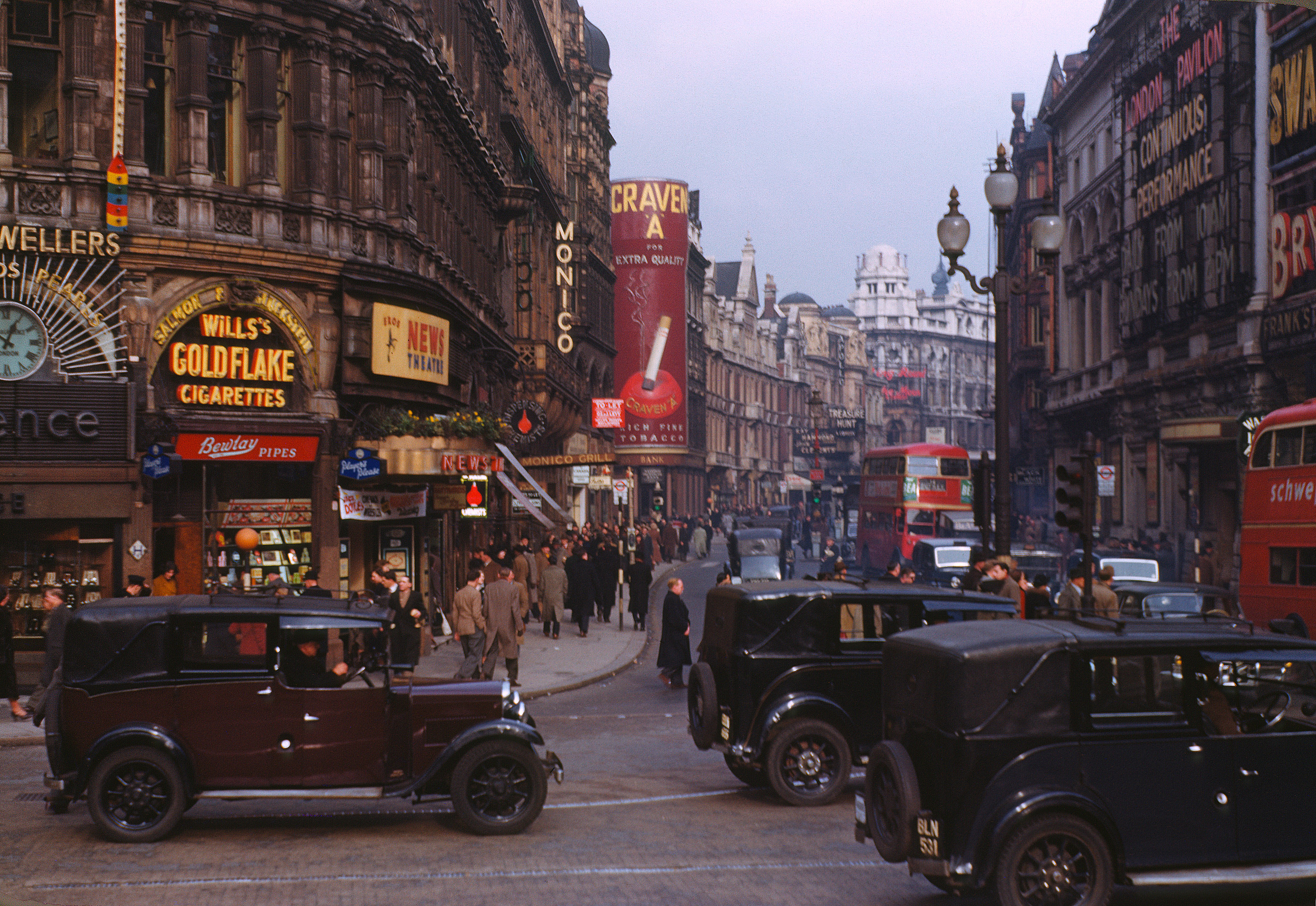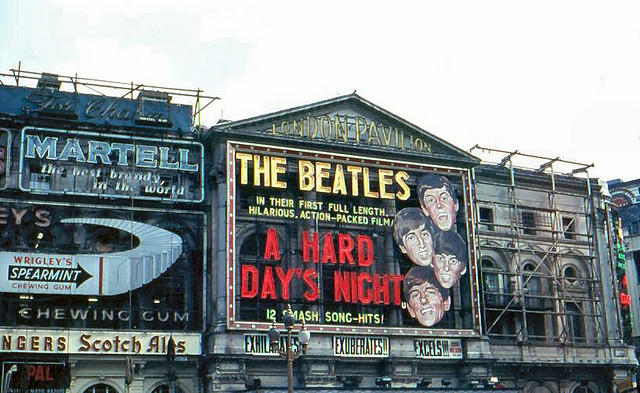London Pavilion Theatre on:
[Wikipedia]
[Google]
[Amazon]
The London Pavilion is a building on the corner of Shaftesbury Avenue and Coventry Street on the north-east side of Piccadilly Circus in London. It is currently a shopping arcade and part of the
 In 1885, Shaftesbury Avenue was built through part of the site, and a new London Pavilion Theatre was constructed. This opened on 30 November 1885 with a popular revue. The new theatre was the first 'music hall deluxe', with marble-topped tables for dining in the auditorium. According to Charles Stuart and A. J. Park in ''The Variety Stage'' (1895) the rebuilding signaled a new era of variety theatre:
In 1885, Shaftesbury Avenue was built through part of the site, and a new London Pavilion Theatre was constructed. This opened on 30 November 1885 with a popular revue. The new theatre was the first 'music hall deluxe', with marble-topped tables for dining in the auditorium. According to Charles Stuart and A. J. Park in ''The Variety Stage'' (1895) the rebuilding signaled a new era of variety theatre:
(1963), pp. 68–84 accessed 13 October 2007
 In 1934, the building underwent significant structural alteration, and was converted into a cinema at a cost of £70,000 by F. G. M. Chancellor, of Frank Matcham and Co. Intended as London outlet to premiere films released by United Artists, the first film to be screened at the Pavilion was the Alexander Korda release '' The Private Life of Don Juan'' which was shown from 5 September 1934; Korda had recently signed an agreement with the American company to release his films. For the première of '' The Curse of Frankenstein'' in May 1957, the foyer was revamped to look like Frankenstein's laboratory, complete with the Monster in a tank. In October 1962 it premiered '' Dr. No'', the first
In 1934, the building underwent significant structural alteration, and was converted into a cinema at a cost of £70,000 by F. G. M. Chancellor, of Frank Matcham and Co. Intended as London outlet to premiere films released by United Artists, the first film to be screened at the Pavilion was the Alexander Korda release '' The Private Life of Don Juan'' which was shown from 5 September 1934; Korda had recently signed an agreement with the American company to release his films. For the première of '' The Curse of Frankenstein'' in May 1957, the foyer was revamped to look like Frankenstein's laboratory, complete with the Monster in a tank. In October 1962 it premiered '' Dr. No'', the first
Trocadero Centre
1859 establishments in the United Kingdom Former cinemas in London Former music hall venues in the United Kingdom Former theatres in London Grade II listed buildings in the City of Westminster Music venues completed in 1859 Music venues completed in 1885 Theatres completed in 1859 Theatres completed in 1885 Tourist attractions in London
Trocadero Centre
The London Trocadero was an entertainment complex on Coventry Street, with a rear entrance in Shaftesbury Avenue, London. It was originally built in 1896 as a restaurant, which closed in 1965. In 1984, the complex reopened as an exhibition and en ...
.
Early history
The first building bearing the name, amusic hall
Music hall is a type of British theatrical entertainment that was popular from the early Victorian era, beginning around 1850. It faded away after 1918 as the halls rebranded their entertainment as variety. Perceptions of a distinction in Bri ...
formed from roofing the yard of the Black Horse Inn, was built in 1859 for Emil Loibl, and Charles Sonnhammer
Charles Sonnhammer was the owner, with Emil Loibl (or Loible), of the London Pavilion music hall. In 1872 they established an "oyster warehouse" at 18 Coventry Street. It stood on the corner with Great Windmill Street. Sonnhammer became the sole ...
. A gallery was constructed for the hall but it could not utilize the full width, because one part of the premises was used by Dr. Kahn's "Delectable Museum of Anatomy".
 In 1885, Shaftesbury Avenue was built through part of the site, and a new London Pavilion Theatre was constructed. This opened on 30 November 1885 with a popular revue. The new theatre was the first 'music hall deluxe', with marble-topped tables for dining in the auditorium. According to Charles Stuart and A. J. Park in ''The Variety Stage'' (1895) the rebuilding signaled a new era of variety theatre:
In 1885, Shaftesbury Avenue was built through part of the site, and a new London Pavilion Theatre was constructed. This opened on 30 November 1885 with a popular revue. The new theatre was the first 'music hall deluxe', with marble-topped tables for dining in the auditorium. According to Charles Stuart and A. J. Park in ''The Variety Stage'' (1895) the rebuilding signaled a new era of variety theatre:Hitherto the halls had borne unmistakable evidence of their origins, but the last vestiges of their old connections were now thrown aside, and they emerged in all the splendour of their new-born glory. The highest efforts of the architect, the designer and the decorator were enlisted in their service, and the gaudy and tawdry music hall of the past gave way to the resplendent 'theatre of varieties' of the present day, with its classic exterior of marble and freestone, its lavishly appointed auditorium and its elegant and luxurious foyers and promenades brilliantly illuminated by myriad electric lights
20th century
The success of the venture led its owner, Villiers, to form a limited company; this became the first combine of music halls, Syndicate Halls Ltd. Lupino Lane made his London début here in 1903, as "Nipper Lane". Between 1912 and 1936, the theatre presented a regular programme of musicals; these includedNoël Coward
Sir Noël Peirce Coward (16 December 189926 March 1973) was an English playwright, composer, director, actor, and singer, known for his wit, flamboyance, and what ''Time'' magazine called "a sense of personal style, a combination of cheek and ...
's first success, ''On With the Dance'' in April 1925. There were appearances by Sir Harry Lauder; in October 1921, the American actor and vocalist Clifton Webb appeared here in ''Fun of the Fayre'' and again in October the following year as Phidas in ''Phi-Phi''. In 1923, electric billboards were erected for the first time on the side of the building."Shaftesbury Avenue", ''Survey of London'': volumes 31 and 32: St James Westminster, Part 2(1963), pp. 68–84 accessed 13 October 2007

 In 1934, the building underwent significant structural alteration, and was converted into a cinema at a cost of £70,000 by F. G. M. Chancellor, of Frank Matcham and Co. Intended as London outlet to premiere films released by United Artists, the first film to be screened at the Pavilion was the Alexander Korda release '' The Private Life of Don Juan'' which was shown from 5 September 1934; Korda had recently signed an agreement with the American company to release his films. For the première of '' The Curse of Frankenstein'' in May 1957, the foyer was revamped to look like Frankenstein's laboratory, complete with the Monster in a tank. In October 1962 it premiered '' Dr. No'', the first
In 1934, the building underwent significant structural alteration, and was converted into a cinema at a cost of £70,000 by F. G. M. Chancellor, of Frank Matcham and Co. Intended as London outlet to premiere films released by United Artists, the first film to be screened at the Pavilion was the Alexander Korda release '' The Private Life of Don Juan'' which was shown from 5 September 1934; Korda had recently signed an agreement with the American company to release his films. For the première of '' The Curse of Frankenstein'' in May 1957, the foyer was revamped to look like Frankenstein's laboratory, complete with the Monster in a tank. In October 1962 it premiered '' Dr. No'', the first James Bond film
James Bond is a fictional character created by British novelist Ian Fleming in 1953. A British secret agent working for MI6 under the codename 007, Bond has been portrayed on film in twenty-seven productions by actors Sean Connery, David Niv ...
, and in July 1964 was the venue for the premiere of '' A Hard Day's Night''. The cinema closed on 26 April 1981 and the site remained in limbo for some years.
In 1986, the interior of the building was gutted and converted into a shopping arcade, preserving only the 1885 façade and the outer walls and roof. A wax figure exhibition opened in the building that same year, run by the Madame Tussauds
Madame Tussauds (, ) is a wax museum founded in 1835 by French wax sculptor Marie Tussaud in London, spawning similar museums in major cities around the world. While it used to be spelled as "Madame Tussaud's"; the apostrophe is no longer us ...
Group, called '' Rock Circus''. The exhibition consisted of waxworks of rock and pop musicians. The ''Rock Circus'' exhibition closed in September 2001.
Twenty-first century
In 2000, the building became part of theTrocadero Centre
The London Trocadero was an entertainment complex on Coventry Street, with a rear entrance in Shaftesbury Avenue, London. It was originally built in 1896 as a restaurant, which closed in 1965. In 1984, the complex reopened as an exhibition and en ...
, and signage on the building was altered in 2003 to read London Trocadero. The basement of the building connects with Piccadilly Circus tube station and the rest of the Trocadero Centre.
The London Pavilion housed Ripley's Believe It or Not!
''Ripley's Believe It or Not!'' is an American franchise founded by Robert Ripley, which deals in bizarre events and items so strange and unusual that readers might question the claims. Originally a newspaper panel, the ''Believe It or Not'' feat ...
, a visitor attraction dedicated to the weird and unusual, which was open from August 2008 until 25 September 2017. On 6 October 2018, Body Worlds London opened in the London Pavilion; the exhibition displays more than 200 real human bodies and organ specimens preserved through the method of Plastination
Plastination is a technique or process used in anatomy to preserve bodies or body parts, first developed by Gunther von Hagens in 1977. The water and fat are replaced by certain plastics, yielding specimens that can be touched, do not smell or ...
.
References and sources
;References ;Sources * ''Guide to British Theatres 1750–1950'', John Earl and Michael Sell pp. 123 (Theatres Trust, 2000) * ''Who's Who in the Theatre'', edited by John Parker, 10th edition revised, London, 1947, p. 1429.External links
{{commons category, London PavilionTrocadero Centre
1859 establishments in the United Kingdom Former cinemas in London Former music hall venues in the United Kingdom Former theatres in London Grade II listed buildings in the City of Westminster Music venues completed in 1859 Music venues completed in 1885 Theatres completed in 1859 Theatres completed in 1885 Tourist attractions in London